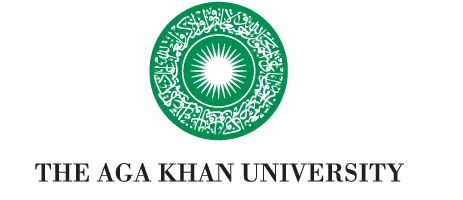A part of the East
Africa Institute’s (EAI) mission is to cultivate social development through addressing challenges and harnessing opportunities for
the East African Community.
We believe that tools like photography can be instrumental in gathering
insights, experiential accounts, and regular stories. But in a fast-paced,
hyper-connected world where nearly anyone can capture a moment and post it
instantaneously to global audiences, we must also remember that with more
accessibility comes the possibility of greater subjectivity. While being
subjective can have some positive implications, it may lead to harm if a visual
representation perpetuates prejudice, stereotypes, or an oversimplified story.
The danger of single
point of view is often how photographs are described; although captions do
provide for context, they too can be misleading and depict an opinion that is
not always grounded in reality. This can happen when tourists visit low-income
countries. Sometimes what they post, from the
photo to the caption to the hashtags, can perpetuate stereotypes, rob the
subject of dignity or privacy, and further promote the idea that Western aid,
charity and intervention are the only solutions.
It’s
possible that the golden age of charity
campaigns, that took place during the 1980s and 1990s, has paved the way for “poverty porn" and
also has directed the traditional “African Narrative” through writing, photography, film and other forms
media. This has exploited people from a
lower economic strata in order to generate the necessary sympathy that would
lead to sales, donations, support, and in most cases today, likes on social
media. What this fails to invite, however, is the question of why poverty
exists in the first place, which can overgeneralise abject poverty in Africa without acknowledging its
sociopolitical complexity and the individual contexts of the continent’s 54 countries.
Since the satirical essay, “How
to Write about Africa,” by
Kenyan Author, Binyavanga Wainaina, was published in 2006, many creatives in
Kenya, namely photographers, have followed in his footsteps of reclaiming their
narrative. Social media has
especially made it easier for them to publish their work, share it with a
global audience, and challenge the (mis)representation of the African
Continent.
A great deal of visual storytelling is happening right in Nairobi, Kenya’s capital. Nairobi - although an international hub
for international diplomacy, finance, banking and commerce - happens to be home
to one of the largest slums in Africa: Kibera. Brian Otieno, born and raised in
Kibera, has been challenging perceptions about his neighbourhood through the
foundation of Kibera Stories.
“My project was different because the images were mixed
up. It shows the good, the bad, and everything else. I started getting people
that were interested in knowing more about this place”. He explains, “When you google Kibera, most of the images that will
pop up show the poverty side of Kibera”.
Otieno’s project goes beyond
the assumed appearance of the neighborhood to show its richness and diversity.
He documents its daily life, from street photography to hip-hop concerts,
marriages and social initiatives.
This work does not come without obstacles, however. At a roundtable in
Nairobi about the ‘Future
of Photojournalism in East Africa’,
many visual storytellers in attendance noted a lack of two factors that East
African photographers often face.
- Education, which leads to an underestimation of the profession, and
- Community, which prevents photographers from collectively working towards solutions. "We don't gather, there are very few mentorships, little interactions and platforms. I see too much competition and no unity," argued Tony Karumba, Kenyan Agence France-Presse photojournalist and Photojournalism Workshop trainer, in a 2017 interview with World Press Photo.
Thankfully another initiative, also in Kibera, is bringing those two
things to the future generation of storytellers. In late July of this year, an
exhibition was held at the Alliance Française in Nairobi titled: “Kibera Kids: A.I. - See the Future.” On display at this event were many photographs captured by children from the area and later
processed using artificial intelligence. The event was hosted by Photo Start, an organisation that offers photography classes to
young students in lower-income areas like Kibera, and hopes to empower the
future generation of visual storytellers through fostering creativity and
marketable skills.
The caveat of breaking free from years of negative stereotypes while feeling the
responsibility to document what is actually happening has, at times, proven to
be a challenge for most visual storytellers. Nonetheless, it seems as though
most photographers agree that capturing something accurately and fairly
supersedes the fear of how it will be perceived by others.
“In countries that face endemic problems like Kenya,
you always find this problem,”
claimed Karumba. “People will think you are showing the country in a bad
light. If it is happening, it is happening and you have a responsibility to
tell it as it is.”
Ultimately, a lot depends on the context. You need to consider the “love thy neighbour as thyself” philosophy. As an ethical philosophy, it
requires a photographer to treat their subjects as they would treat themselves.
Despite obstacles, photojournalistic initiatives developing in East
Africa hope to further challenge international views. It’s clear that visual storytelling is best
done when it comes from a place of understanding an authenticity and, given the
local and worldwide support of the work emerging out of East Africa so far, many
are eagerly welcoming a more personal perspective.
Note to readers:
To view visual content from African photographers all over the
continent, you can also look at the Everyday
Africa Instagram account. This social
media campaign has created a new way of looking at foreign cultures, from a
local perspective, to a global audience. To date, the account has roughly 5,051
posts.
Nina Plummer is an EAI Research Assistant, conducting research on
malnutrition, early childhood development, and learning outcomes.

